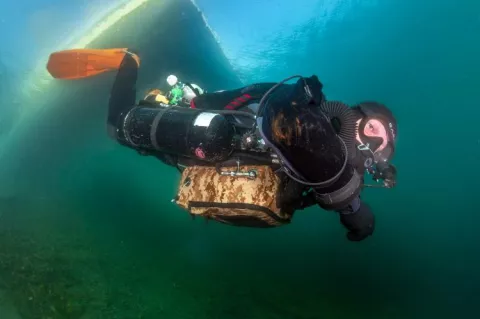The Generic Breathing Machine: Front-Mounted Rebreather Innovation
Technical diving instructor and inventor Gregory Borodiansky is qualified to dive 20 different rebreathers. He is also a rebreather instructor on many units and a rebreather instructor trainer. Since Borodiansky has a background in electronic engineering and computer science, he took the features he liked on each unit and designed a front-mounted rebreather. Larry Cohen reports.




